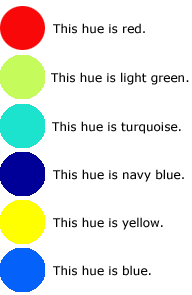WINDOW TREATMENT
Window treatment
You will notice that there are a lot of different fabrics to choose from. You may already
decide if you want to use a solid colour or printed pattern, lightweight medium or heavy fabric for your window treatment .
Be careful when you choose, it is best to take a class or find it online as it is no easy to get an easy recovery from the loss of choosing the wrong fabric for a job.
On the other hand you may not be quite sure what you really need. You may want to let in a lot of
light or you may want to control the amount of light at the same time you want privacy. You could
simple just want to dress up your window.
You will find here a few guide lines to help you with your
project. Fabric for decorating do have different characteristics from fabric use for fashion.They are more
durable and are usually treated for stain resistance. When cleaning most decorators fabrics must be dry
clean to avoid shrinkage although some can be laundered. This information for laundering is usually
found on the fabric bolt or tube. If you need to wash your window treatment frequently consider buying
a suitable fashion fabric
.
Generally speaking you will find decorator fabric rolled on a long tube to prevent creasing, contrary fashion fabrics are usually
doubled and rapped on a card boarding bolts.Most fabrics suited for window treatment are woven having straight
length wise and crosswise yarns. Starting from left on the first picture are lightweight fabrics A= Yelets B=Lace C= shirr, are used for simple curtains and valances that dress a window
but offer no privacy. Picture 2 includes D=plain weave and E=satin weave fabrics which have a natural sheen and are medium weight fabric suitable for top treatment, shades or curtains .They offer more privacy and control light better.Woven in design like F= Jacquard may also be printed and are more on the heavier side. Lining a curtain gives the best results as the curtain last longer. Always remember to use a lining suitable for window treatment.Before cutting fabric for your window treatment pin-mark the placement for each along the selvedge double check the measurement and check fabric for flaws, Once cut fabric cannot be returned to the store,
To ensure curtains hang straight the fabric must be cut on grain. This means that the cut are made along the exact
crosswise grain of the fabric. Rather than the grain line therefore patterns are to be cut on following the pattern repeat
rather than the grain line so they must be printed on grain if treatment is to hang correctly.
crosswise grain of the fabric. Rather than the grain line therefore patterns are to be cut on following the pattern repeat
rather than the grain line so they must be printed on grain if treatment is to hang correctly.
Most window treatment can be sewn using a straight stitch. However loosely woven fabrics such as casement laces are
sewn using a zigzag stitch. This allows the seam to relax and prevent puckering when it hangs in the window. For light weight
or loosely woven fabrics such as sheers pull out a yarn along the crosswise grain, from selvedge to selvedge cut along the line
left by the missing yarn.
sewn using a zigzag stitch. This allows the seam to relax and prevent puckering when it hangs in the window. For light weight
or loosely woven fabrics such as sheers pull out a yarn along the crosswise grain, from selvedge to selvedge cut along the line
left by the missing yarn.
Pattern on grain .
This means that the pattern repeat coincides exactly with the cross grain. To test fabric before buying place it on a surface
and fold it back across itself, align the selvedge crease the fold with your fingers, Unfold the crease check to see if it runs
into the selvedge of exactly the same point in the pattern on both sides. Slight difference of 2’’ (5cm) usually can be
corrected by stretching the fabric diagonally avoid buying fabric that is printed more than 2’’ (5cm) off grain as you will n
ot be able to correct it, and when cut according to the pattern will not hang straight,
Selecting the Right Colour And Fabric
and fold it back across itself, align the selvedge crease the fold with your fingers, Unfold the crease check to see if it runs
into the selvedge of exactly the same point in the pattern on both sides. Slight difference of 2’’ (5cm) usually can be
corrected by stretching the fabric diagonally avoid buying fabric that is printed more than 2’’ (5cm) off grain as you will n
ot be able to correct it, and when cut according to the pattern will not hang straight,
...
Selecting the Right Colour And Fabric



Comments